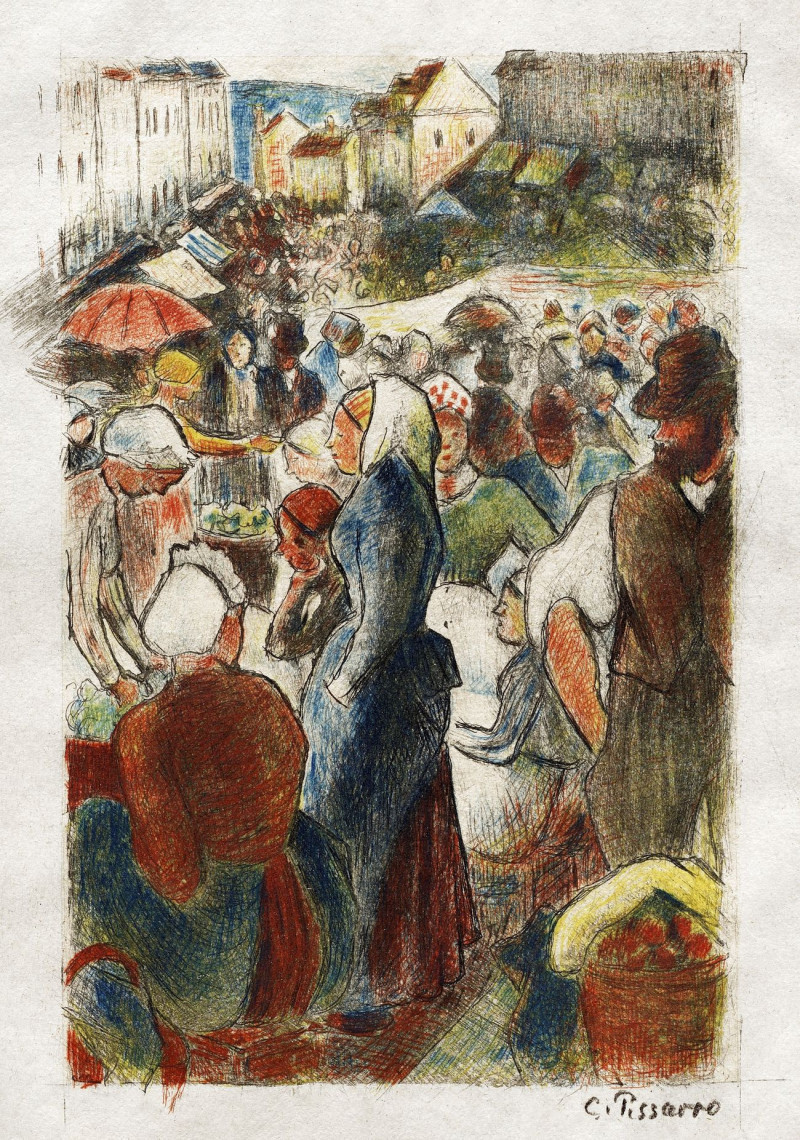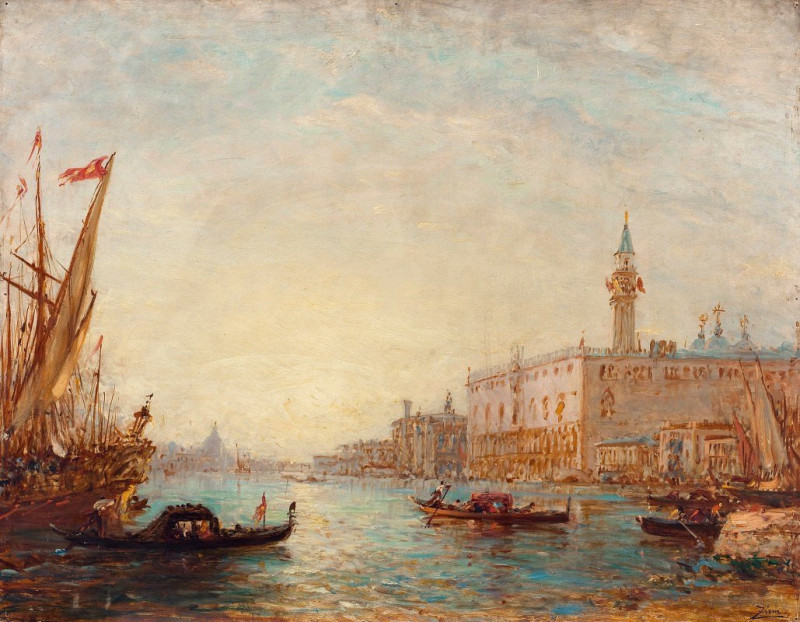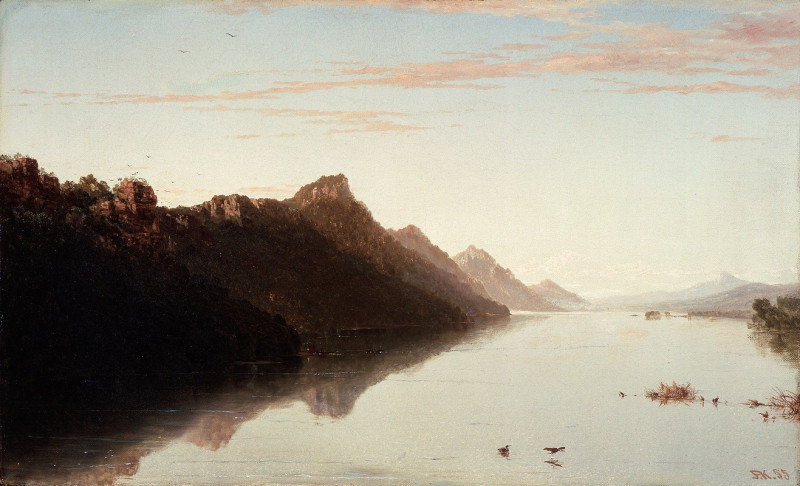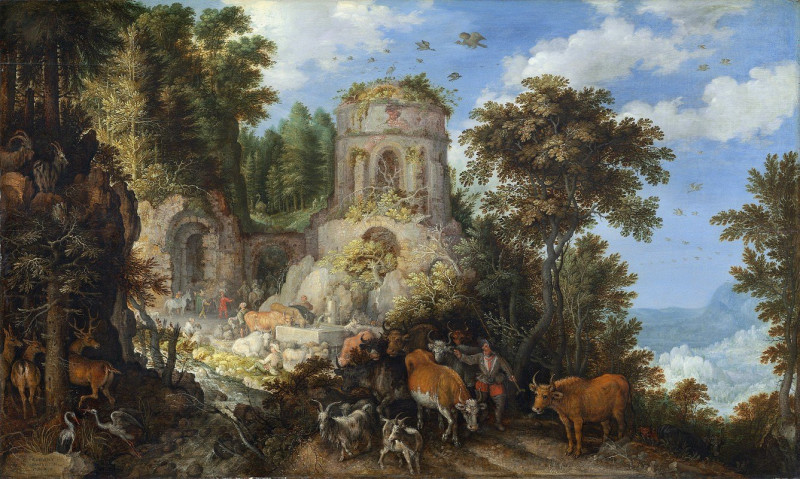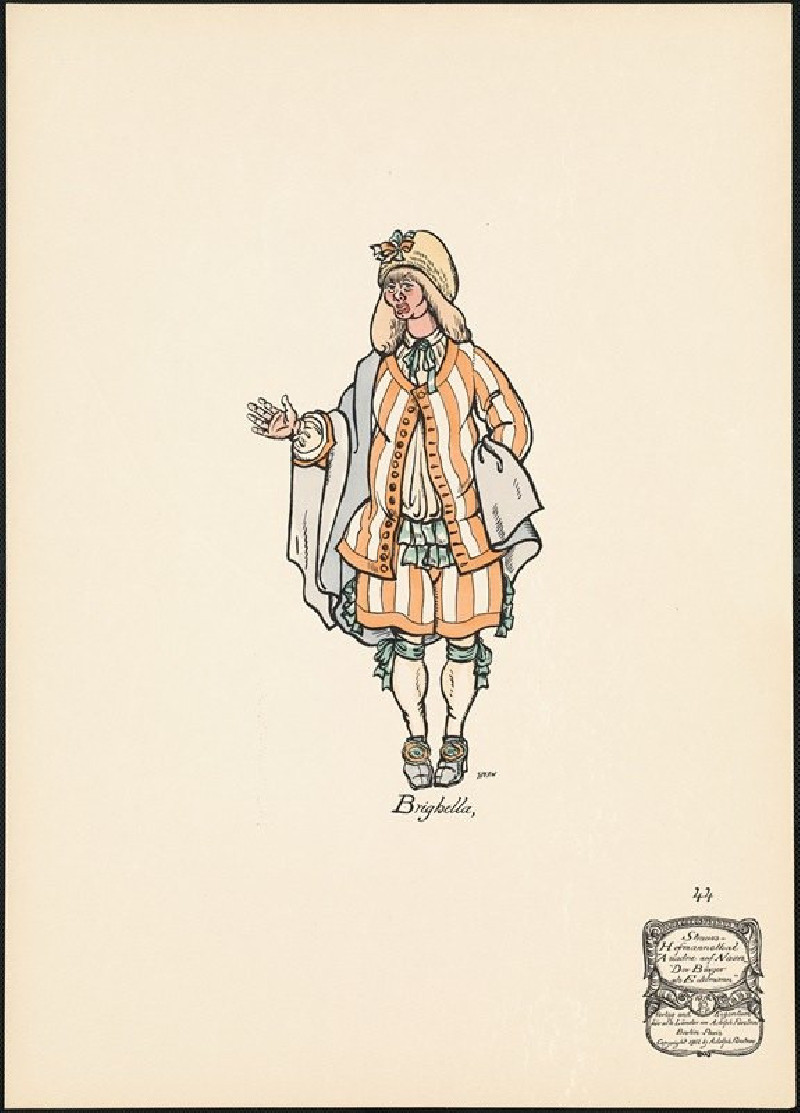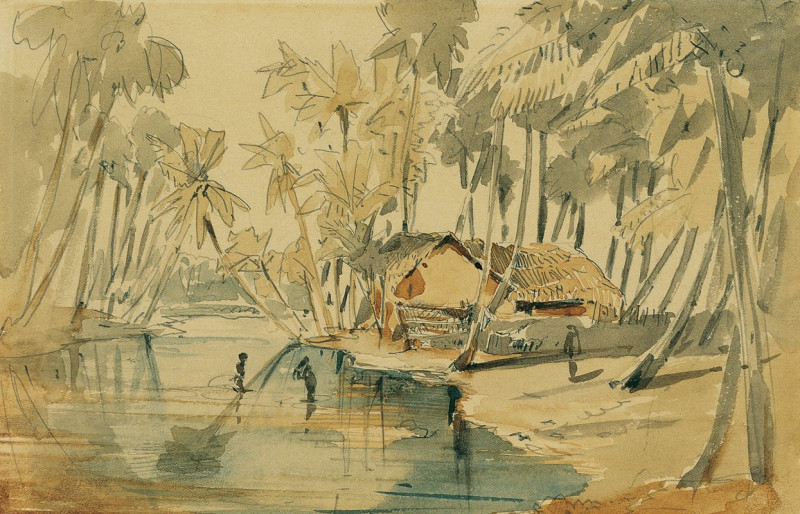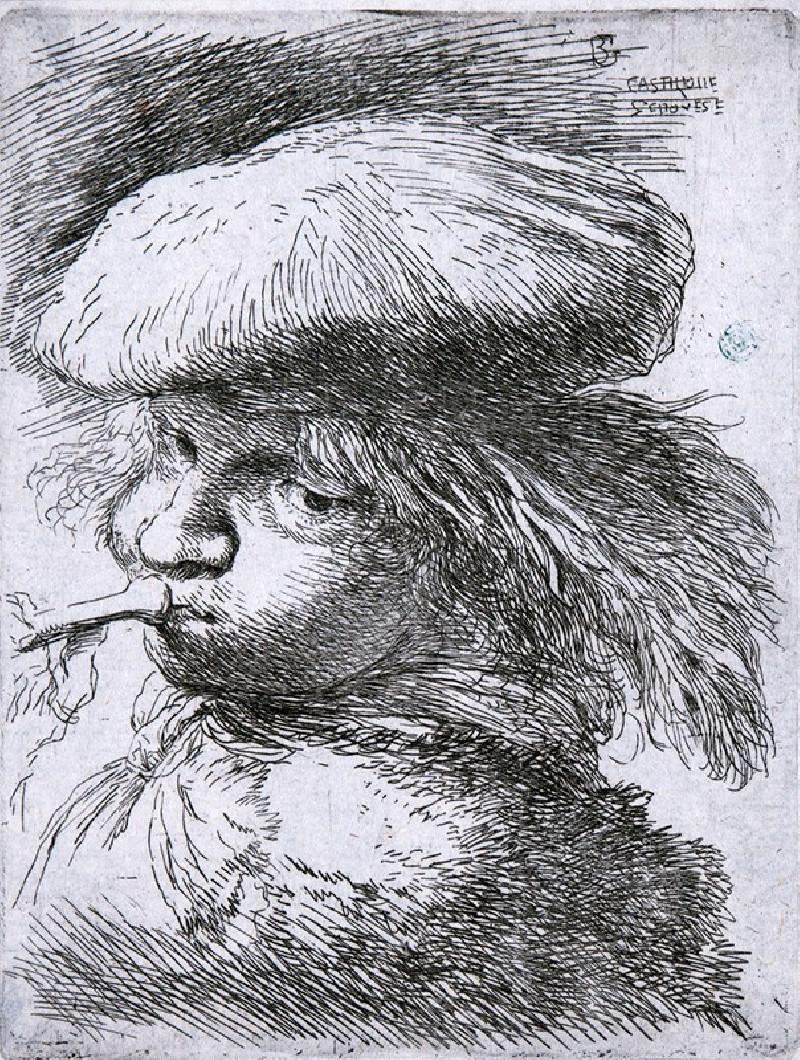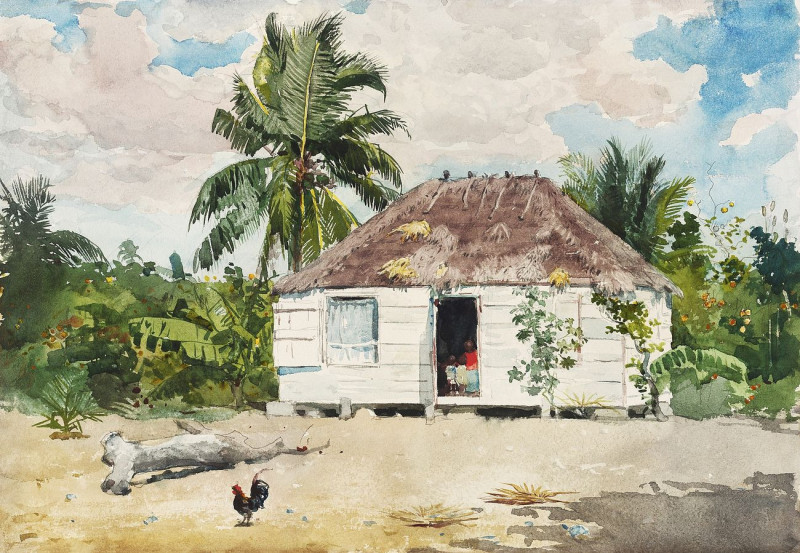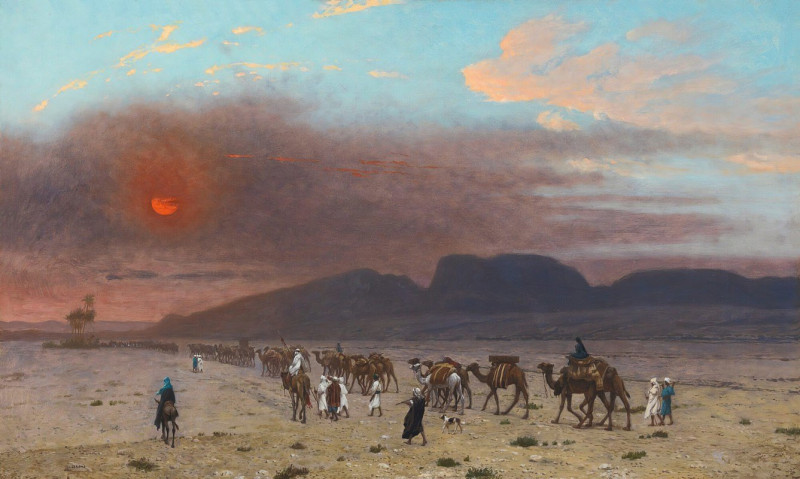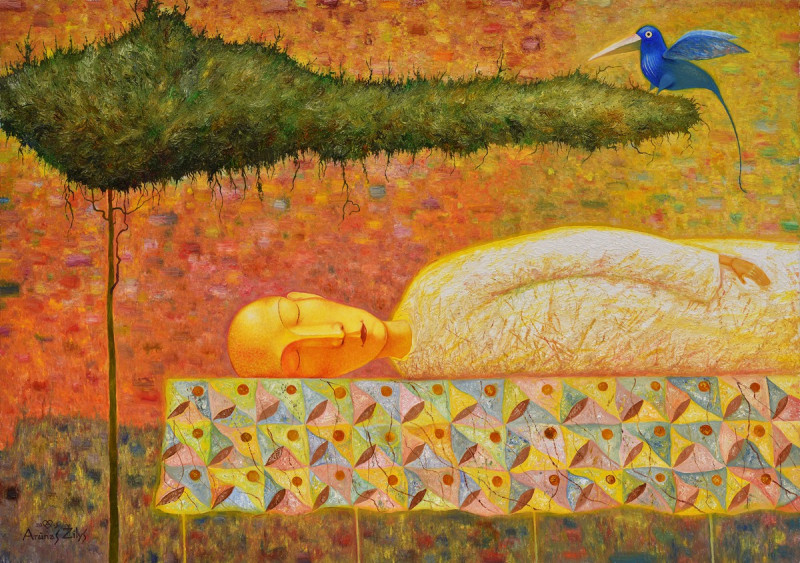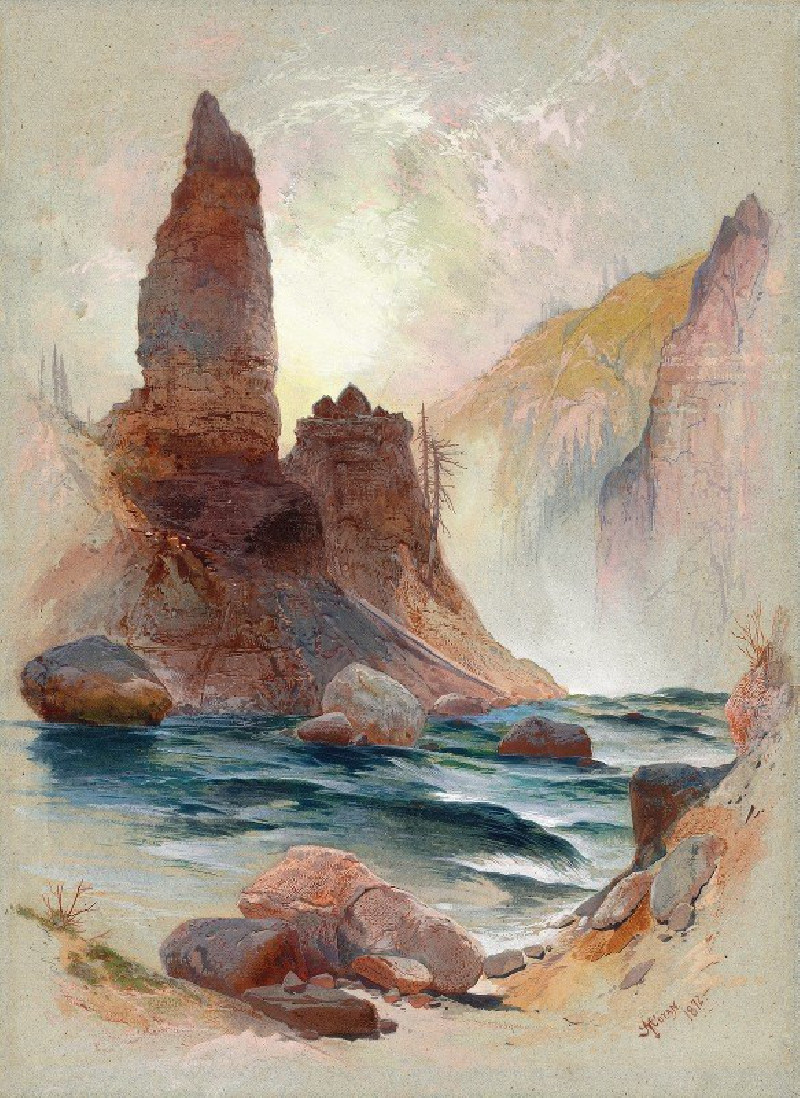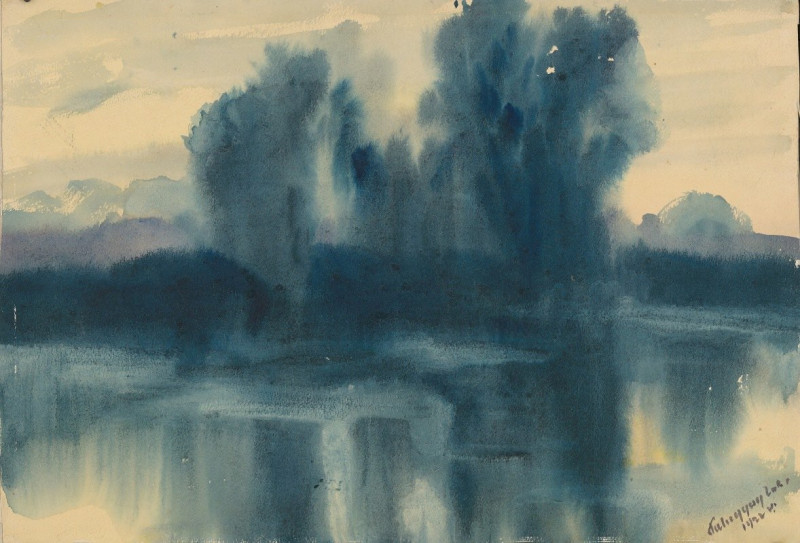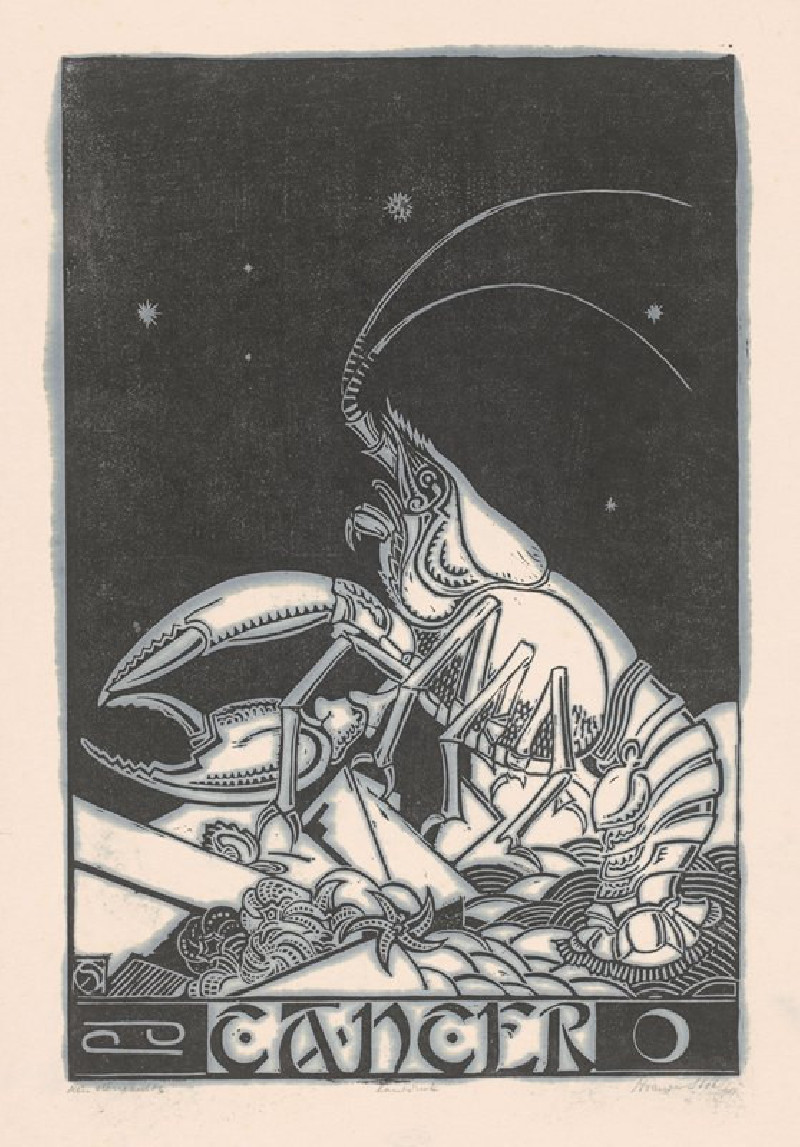The Gisors Market, Rue Cappeville
Technique: Giclée quality print
Recommended by our customers
More about this artwork
The painting "The Gisors Market, Rue Cappeville" by Camille Pissarro captures the vibrant ambience of a market day on a busy street. In this colorful work, the foreground is bustling with market-goers where a group of individuals, predominantly women, are engaged in various activities typical of a market scene. Some appear to be buying or inspecting produce, while others are in conversation, contributing to a lively communal atmosphere.The artist uses a mix of bold and sketch-like strokes to give life to the crowd, with pops of color—reds, blues, yellows, and earth tones—that draw the eye across the composition. Umbrellas and hats dot the scene, suggesting either a sunny day or a shelter from the drizzle.In the background, we see the façade of buildings which line the street, rendered with less detail, but marked by the play of light and shadow that adds depth and a sense of place. This setting is typical of Pissarro's work, reflecting his interest in rural activities and small-town life as well as his mastery of light and color to evoke a sense of immediacy and everyday life.Overall, the painting pulsates with the energy of daily commerce and social interaction, encapsulated in Pissarro’s distinctive impressionist style. This piece not only portrays a simple market scene but also subtly communicates the rhythm and the busy pace of rural French life during that period.
Delivery
Returns
Blessed are they who see beautiful things in humble places where other people see nothing. — Camille Pissarro
Camille Pissarro (1830-1903) was born on St.Thomas (now the US Virgin Islands) to a Portuguese father and a Dominican mother. He went to Paris to study art at Ecole des Beaux-Arts. He was an early pioneer of pointillism and neo-impressionism and later became a mentor of many famous impressionist painters including Cezanne, Manet, Renoir, and Gauguin. His paintings depicted rural and urban French landscapes and lifestyle. Many of his works politically captured images of peasants and laborers. Today, he is considered the father of impressionism.

